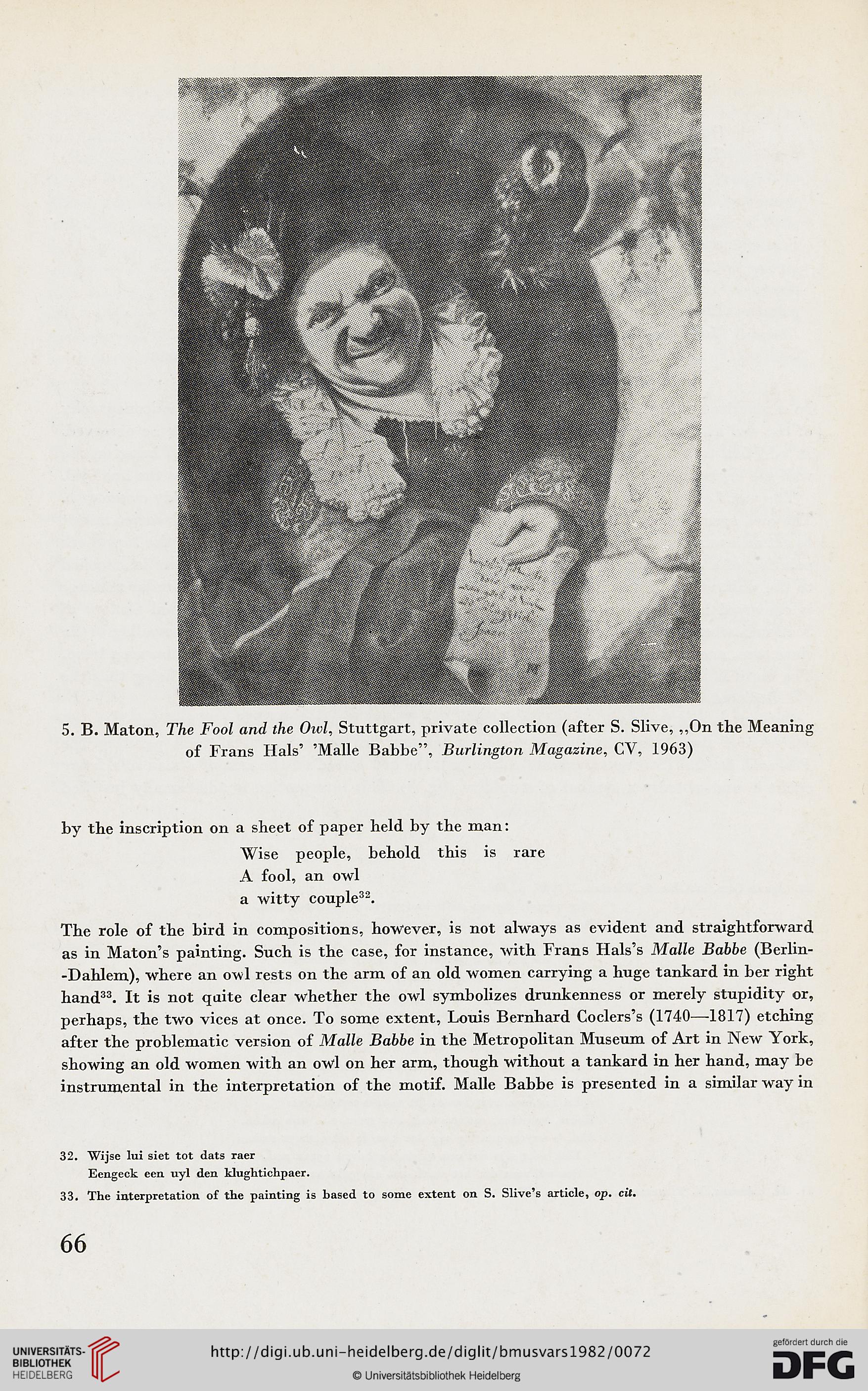5. B. Maton, The Fool and the Owi, Stuttgart, private collection (after S. Slive, „On the Meaning
of Frans Hals' 'Maile Babbe", Burlington Magazine, CV, 1963)
by the inscription on a sheet of paper held by the man:
Wise people, behold this is rare
A fool, an owi
a witty couple32.
The role of the bird in compositions, however, is not always as evident and straightforward
as in Maton's painting. Such is the case, for instance, with Frans Hals's Maile Babbe (Berlin-
-Dahlem), where an owi rests on the arm of an old women carrying a huge tankard in ber right
hand33. It is not quite elear whether the owi symbolizes drunkenness or merely stupidity or,
perhaps, the two vices at once. To some extent, Louis Bernhard Coclers's (1740—1817) etching
after the problematic version of Maile Babbe in the Metropolitan Museum of Art in New York,
showing an old women with an owi on her arm, though without a tankard in her hand, may be
instrumental in the interpretation of the motif. Maile Babbe is presented in a similar way in
32. Wijse lui siet tot dats raer
Eengeck een uyl den klughtichpaer.
33. The interpretation of the painting is based to some extent on S. Slive*s article, op. cii*
66
of Frans Hals' 'Maile Babbe", Burlington Magazine, CV, 1963)
by the inscription on a sheet of paper held by the man:
Wise people, behold this is rare
A fool, an owi
a witty couple32.
The role of the bird in compositions, however, is not always as evident and straightforward
as in Maton's painting. Such is the case, for instance, with Frans Hals's Maile Babbe (Berlin-
-Dahlem), where an owi rests on the arm of an old women carrying a huge tankard in ber right
hand33. It is not quite elear whether the owi symbolizes drunkenness or merely stupidity or,
perhaps, the two vices at once. To some extent, Louis Bernhard Coclers's (1740—1817) etching
after the problematic version of Maile Babbe in the Metropolitan Museum of Art in New York,
showing an old women with an owi on her arm, though without a tankard in her hand, may be
instrumental in the interpretation of the motif. Maile Babbe is presented in a similar way in
32. Wijse lui siet tot dats raer
Eengeck een uyl den klughtichpaer.
33. The interpretation of the painting is based to some extent on S. Slive*s article, op. cii*
66




